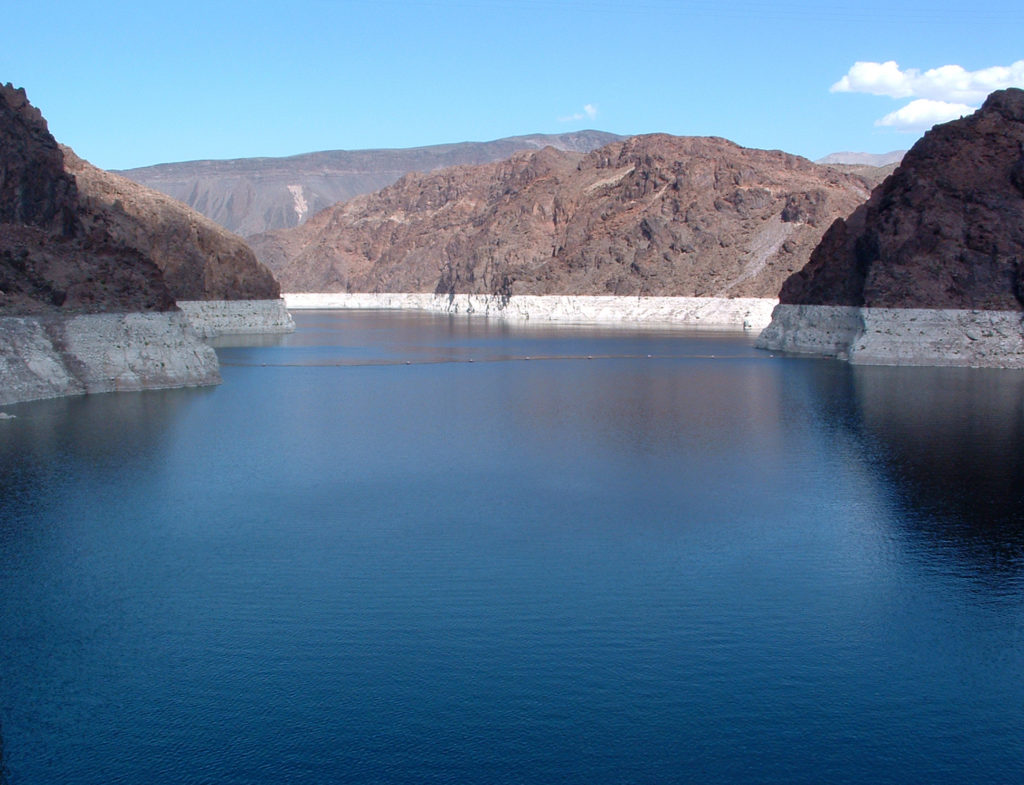Lower Colorado River States Reach Agreement to Reduce Water Use

On December 15, 2021, the lower basin states of the Colorado River Basin – California, Nevada, and Arizona – announced a deal with the U.S. Bureau of Reclamation to keep more water in Lake Mead.
This deal was the latest in a series of agreements and measures aimed at addressing water scarcity in the region. Climate change, development, and population growth have led to decreasing levels in Lake Mead over the last 20 years. In 2000, Lakes Mead and Powell, the levels of which are often used as indicators of water supply in the basin, were over 90% full. Now, they are under 50% full.
The region has a long history of agreements to govern the river, dating back to the 1922 Colorado River Compact, which serves as the basis of the “Law of the River.” In 2007, in response to dwindling supply, the basin states agreed to the Colorado River Interim Guidelines, which modified the Law of the River to help conserve water. This agreement allows more water to be taken from the river when reservoir levels are high, and less to be taken when they are low.
The hot drought in the region did not cease, and a new set of agreements was necessary in 2019. Called “Drought Contingency Plans,” these agreements placed further restrictions on water use when reservoir levels are low. These are seen as a temporary solution to the problem. In August of 2021, the federal government declared the first-ever water shortage in the basin under the new DCPs. This “Tier 1” shortage reduces the amount of water that Arizona, Nevada, and Mexico can claim from the river. If levels in Lake Mead continue to drop, more severe reductions will be triggered under the agreements.
In an effort to prevent Mead from dropping below 1,025 feet, the level which would trigger further cutbacks, the lower basin states agreed to voluntary reductions in water use under the “500+ plan.” The goal of this plan is to add 500,000 acre-feet of additional water to Lake Mead in both 2022 and 2023. That is enough water to serve about 1.5 million households for a year and would add about 16 feet to the reservoir’s level.
The plan involves commitments of $60 million from Arizona, $20 million from Nevada and California, as well as matching from the federal government to total a $200 million funding pool. This money will be used to incentivize farmers, water agencies, and tribes to reduce their total water use.
Similar to the DCPs, this agreement is seen as a temporary solution to the water shortages in the basin. In 2026, the Interim Guidelines adopted in 2007 expire; a new set of guidelines are already being negotiated to replace them. At the moment, this renegotiation is the best opportunity to create a framework for water management in the Colorado basin that is sustainable in the context of the climate crisis.
The Colorado River receives much of its water from snow melt in the Rocky Mountains, but less precipitation in the last 20 years has reduced the river’s supply. Moreover, higher temperatures year-round cause more evaporation, which also reduces the amount of water in the river and reservoirs. This situation is only expected to worsen with climate change.
Forty million people rely on water from the Colorado. It is used to irrigate crops that are distributed all over the U.S. Thirty Native American tribes also rely on the river. Despite tribes having a much more significant role in the ongoing Interim Guidelines renegotiations than ever before, they were not included in the development of the 500+ plan, although some tribes may receive funding from it to voluntarily reduce their water use.
